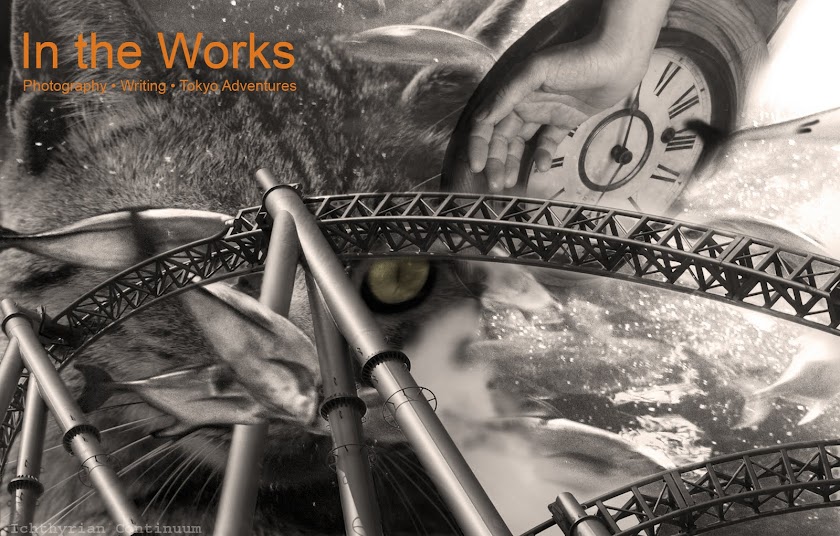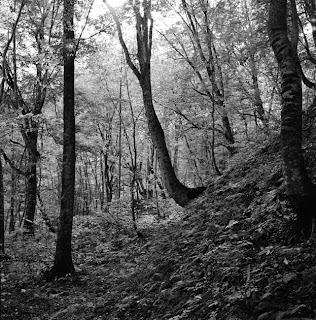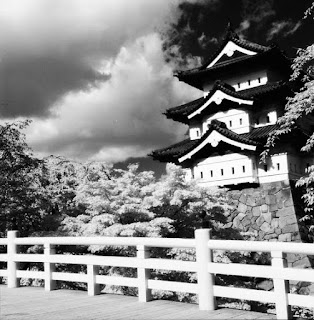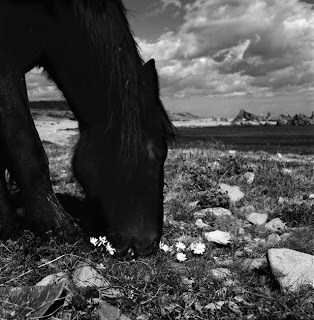I recently bought a vintage rangefinder camera. I was browsing at an antique market at Aka Renga Soko in Yokohama Japan. I was intrigued by a table displaying watch parts in various stages of usability. I quickly realized that any project involving these pieces would be over my head. To the side of the table was a cardboard box full of old junk cameras. Now this was more my area. I’d been looking for a cheap camera to do Lomography style photos; some kind of old thing that I could trick-out or modify with out feeling guilty.
There were some old SLR bodies with out lenses or covers in obvious disrepair. One was a Canon A-F, the other was a Contax. Nope. Not interested. They wouldn’t even look good as decoration and I certainly didn’t need them for parts. One camera still had a leather case on it. I opened it up and it seemed like the shutter still worked. It was a Petri 1.9 Color Corrected Super, 35mm rangefinder. I asked the dealer if it still worked. He opened the camera and it had a roll of film in it. We closed it up, clicked a few frames and advanced the film. Seemed to work. He wanted 5000 yen for the camera, but I wasn’t so sure about how it would work. The lens had a lot of dust and looked like it might be a bit moldy. I was willing to chance 3000 yen on the camera thinking it looked cool enough to just sit on the shelf.
Anxious to try the camera out, I practically ran to World Porters which has a branch of Popeye Camera. Popeye Camera really promotes analog camera use and girlie type photography. The store sells vintage cameras, Holga, Lomo, as well as digital cameras. Various types of saturation,color casts and paper samples decorate the store and help the customer experiment with their prints or refine their final product. I was looking on my iPhone for an instruction manual on how to load film into the camera but of course the battery died. Not to worry because the staff at Popeye Camera are familiar with old cameras. When I asked for help on how to load the camera, I got excellent instructions. I bought a roll of Solaris 800 because it was already 3:30 and I was on my way to try it out.
My first shot was in a store. There is no light meter on this camera. This isn’t so much of a problem as I have my own handheld meter but I’d left the meter at home little guessing I’d be having a new camera adventure. I ended up guessing wildly at my exposures and bracketing once in a while.
I found the rangefinder kind of hard to focus. This issue wasn’t unexpected. I had considered buying a Mamiya 6 until I rented one and tried it. I love many things about the Mamiya 6 but I couldn’t focus on distant, complex objects like cherry blossoms. I decided I wouldn’t worry too much about focus with the Petri and decided to rely mostly on the distance scale. I was so eager I to try it, I ended up shooting in twilight and night. Not the best time to test focus.
For my next shots, my mom and I rode on the Cosmo Clock ferris wheel and I took photos of Cosmo World, and Minato Mirai area. I finished the roll around 6 pm and tried to rewind the film and remove it. I forgot about the the clerk’s instruction on how to rewind the film. There is a little button on the bottom of the camera that must be pressed while winding the film. Fortunately, I hadn’t assumed I needed more force when the film didn’t rewind. Finally, I remembered the procedure. I rewound the film for what felt like forever. It took so long to rewind the film that I just assumed I was finished and opened the camera back. Yikes! Not finished rolling. I rewound some more and decided again that I must be done. This time when I opened the back again, there was a little tail of film sticking out. I pushed it back into the can and hoped that I’d only ruined a few frames. With an exposed roll of film burning my pocket, I headed off to Bic Camera in Kawasaki to process the roll of film. I was dying to see if this cheap camera from the junk box could actually take a picture.
One hour later I had developed negatives and a pack of prints. Shockingly, I had almost 32 prints. Some didn’t work out because I was way off on the exposure, but the print machine compensated on these frames so that I would get some kind of image, no matter how grainy the result. The photos were also surprisingly sharp and not marred by dust. I was really happy with my purchase.
The only thing marring my joy with this camera is the smell. It smells kinda funky. The inside of the camera looked dusty and a bit moldy maybe. I’ve cleaned the camera and the case (Fabreezing the case for good measure) but it still smells a bit. Maybe it will smell less after I clean it and let it sit in open air.
Summary
Petri 1.9 Color Corrected Super 35 mm rangefinder
3000 yen, mechanisms still operating, leather case with Petri logo embossed on it. NO lens cap
Lens: fixed Petri orikkor 1: 1.9 f=4.5cm (lens a bit dusty and maybe small mold dots)
Shutter Type: Copal-SV
Shutter Speeds: B, 1s-1/500
Aperture Settings: F1.9-F16 in whole stop increments All the F-stops are in green numbering except F-11 (Why?)(I notice that the camera doesn’t always click into a stop so it seems I can get half stops?)
Flash: mount and flash outlet on the lens, M and X settings (not sure what they are)
Timer lever (I haven’t tried it because why tempt fate?)
I found Petri 1.9’s specs on this website:
It seems kind of hard to find info on this camera. I’m looking forward to finding out more.
I will post some of the test pics soon.
Wednesday, December 29, 2010
Saturday, December 25, 2010
Pictures from Aomori, Japan October 2010
In October 2010 I took a trip to Aomori Prefecture. This is the northernmost prefecture on Honshu which is the main island of Japan. I was fortunate enough to spend a week and travelled throughout most of the prefecture. I was able to a lot of different types of photography.
These are some of the infra-red images I shot on my Hasselblad C500.
These are some of the infra-red images I shot on my Hasselblad C500.
Subscribe to:
Posts (Atom)




